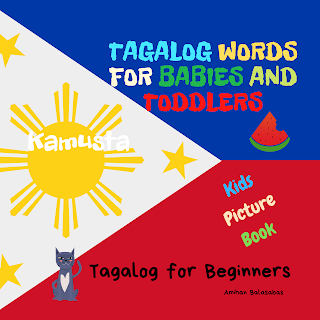If you are traveling to the Philippines, then these Tagalog numbers (Filipino numbers) will be useful for you. Tagalog is spoken as a language in the Philippines and is the official language of the Philippines. There are two forms of Tagalog namely Old Tagalog which is an ancient form of the language while Batangas Tagalog is a dialect of the language. In addition, the Filipino language is a standardised form of the Tagalog language that forms the official language of the Philippines. If you traveling to the Philippines, then you might wish to learn a few words and numbers for your travels. Here’s a list of Tagalog numbers 1-100 compiled by Amihan Balasabas. Feel free to print them out if you wanted to them with you. If you press the print button then you can eastly print them as printable Tagalog numbers 1 100 in words.
Tagalog numbers in 1 to 100
One 1 isa
Two 2 dalawa
Three 3 tatlo
Four 4 apat
Five 5 lima
Six 6 anim
Seven 7 pito
Eight 8 walo
Nine 9 siyam
Ten 10 sampu
Eleven 11 labing-isa
Twelve 12 labindalawa
Thirteen 13 labintatlo
Fourteen 14 labing-apat
Fifteen 15 labinlima
Sixteen 16 labing-anim
Seventeen 17 labimpito
Eighteen 18 labingwalo
Nineteen 19 labinsiyam
Twenty 20 dalawampu
Twenty one 21 dalawampu’t isa
Twenty two 22 dalawampu’t dalawa
Twenty three 23 dalawampu’t tatlo
Twenty four 24 dalawampu’t apat
Twenty five 25 dalawampu’t lima
Twenty six 26 dalawampu’t anim
Twenty seven 27 dalawampu’t pito
Twenty eight 28 dalawampu’t walo
Twenty nine 29 dalawampu’t siyam
Thirty 30 tatlumpu
Thirty one 31 tatlumpu’t isa
Thirty two 32 tatlumpu’t dalawa
Thirty three 33 tatlumpu’t tatlo
Thirty four 34 tatlumpu’t apat
Thirty five 35 tatlumpu’t lima
Thirty six 36 tatlumpu’t anim
Thirty seven 37 tatlumpu’t pito
Thirty eight 38 tatlumpu’t walo
Thirty nine 39 tatlumpu’t siyam
Forty 40 apatnapu
Forty one 41 apatnapu’t isa
Forty two 42 apatnapu’t dalawa
Forty three 43 apatnapu’t tatlo
Forty four 44 apatnapu’t apat
Forty five 45 apatnapu’t lima
Forty six 46 apatnapu’t anim
Forty seven 47 apatnapu’t pito
Forty eight 48 apatnapu’t walo
Forty nine 49 apatnapu’t siyam
Fifty 50 limampu
Fifty one 51 limampu’t isa
Fifty two 52 limampu’t dalawa
Fifty three 53 limampu’t tatlo
Fifty four 54 limampu’t apat
Fifty five 55 limampu’t lima
Fifty six 56 limampu’t anim
Fifty seven 57 limampu’t pito
Fifty eight 58 limampu’t walo
Fifty nine 59 limampu’t siyam
Sixty 60 animnapu
Sixty one 61 animnapu’t isa
Sixty two 62 animnapu’t dalawa
Sixty three 63 animnapu’t tatlo
Sixty four 64 animnapu’t apat
Sixty five 65 animnapu’t lima
Sixty six 66 animnapu’t anim
Sixty seven 67 animnapu’t pito
Sixty eight 68 animnapu’t walo
Sixty nine 69 animnapu’t siyam
Seventy 70 pitumpu
Seventy one 71 pitumpu’t isa
Seventy two 72 pitumpu’t dalawa
Seventy three 73 pitumpu’t tatlo
Seventy four 74 pitumpu’t apat
Seventy five 75 pitumpu’t lima
Seventy six 76 pitumpu’t anim
Seventy seven 77 pitumpu’t pito
Seventy eight 78 pitumpu’t walo
Seventy nine 79 pitumpu’t siyam
Eighty 80 walumpu
Eighty one 81 walumpu’t isa
Eighty two 82 walumpu’t dalawa
Eighty three 83 walumpu’t tatlo
Eighty four 84 walumpu’t apat
Eighty five 85 walumpu’t lima
Eighty six 86 walumpu’t anim
Eighty seven 87 walumpu’t pito
Eighty eight 88 walumpu’t walo
Eighty nine 89 walumpu’t siyam
Ninety 90 siyamnapu
Ninety one 91 siyamnapu’t isa
Ninety 92 siyamnapu’t dalawa
Ninety three 93 siyamnapu’t tatlo
Ninety four 94 siyamnapu’t apat
Ninety five 95 siyamnapu’t lima
Ninety six 96 siyamnapu’t anim
Ninety seven 97 siyamnapu’t pito
Ninety eight 98 siyamnapu’t walo
Ninety nine 99 siyamnapu’t siyam
One hundred 100 isang daan
Tagalog Words for Babies and Toddlers. Tagalog for Beginners. Kids Picture Book: Easy to Learn Tagalog Words for Bilingual Children
If you like to buy a Tagalog numbers book then you can consider buying some from Amihan Balasabas. His book is called Tagalog Numbers 1-100 in Words.









